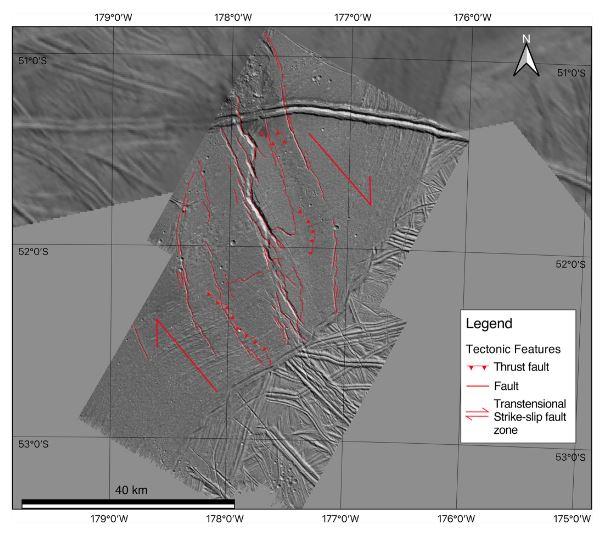New Publication: Tectonic features of Jupiter's moon Europa
News from Jul 12, 2023
A team of researchers from Freie Universität Berlin led by Pietro Matteoni from Prof. Frank Postberg's group, published an article on the tectonic setting of an intriguing area of Jupiter's moon Europa, with implications for the understanding of the structure of the moon's ice shell. The article was published on June 21st in AGU's Journal of Geophysical Research.
Tectonic cracks, which can originate from shallow water bodies within the icy crust or directly from the subsurface ocean, may emplace fresh material onto Europa's surface. This kind of material is a prime target for upcoming space missions to assess Europa's habitability. The team investigated the area of Ménec Fossae, which is characterized by many different geological features and structures within a relatively small area and can therefore provide clues on the mechanisms that shaped it. The analyses were based on imaging and new topographic data, and the team developed a new hypothesis involving a combination of different tectonic styles as the driving processes for the formation of this area. This kind of tectonic activity could be related to a liquid water pocket located at a shallow depth within Europa's icy crust, which might explain the concurrent presence of some particular geological features in the area. These findings strengthen the case for the wide distribution of shallow water pockets within the icy crust, which could allow future space missions to more easily assess Europa's habitability.

Figure: Proposed structural setting in the area of Ménec Fossae, image centered at 52°S, 177°W. The right-lateral strike-slip faulting controls the deformation along a wide shear zone, generating several extensional and transtensional features (marked together in the legend for ease of use of the structural map) and few compressive structures, in a predominantly transtensional (right-lateral) tectonic setting [...] (more Information in the paper)